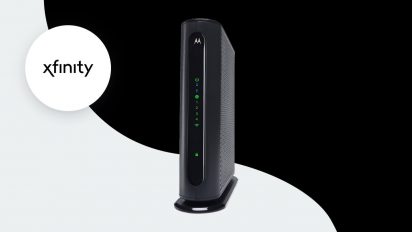AT&T vs. Xfinity internet: Choose the right ISP
By Ari Howard Last updated: August 25, 2023
If AT&T Fiber is available, it is a better deal, with no data caps, contracts or equipment fees and speeds up to 4,700 Mbps. Xfinity has cheaper plan options but less fiber internet availability.
Search internet providers for plans in your area

Xfinity vs. AT&T overview

AT&T
- Speeds – 10 Mbps – 4,700 Mbps
- Prices starting at – $55.00/mo.
- Data caps – 1TB/mo. DSL, unlimited with AT&T Fiber

Xfinity
- Speeds – 50 Mbps – 6,000 Mbps
- Prices starting at – $24.99/mo.
- Data caps – 1.2 TB
What we like about AT&T
-
No equipment fees
-
No contracts
-
Unlimited data
Things to consider
-
DSL plans have rate hikes
-
No bundle discounts
What we like about Xfinity
-
Availability
-
No contract options
-
Great speeds
Things to consider
-
Hidden fees
-
Promotional rates and early termination fees
-
Regional pricing

AT&T Fiber internet rating
Allconnect Rating
4.43 / out of 5 stars
This score is based off of the 5 plans AT&T Fiber has available
Rating breakdown
-
Affordability
4.21 / 5
-
Performance
4.53 / 5
-
Value
4.80 / 5
-
Customer satisfaction
4.10 / 5

Xfinity internet rating
Allconnect Rating
3.54 / out of 5 stars
This score is based off of the 7 plans Xfinity has available
Rating breakdown
-
Affordability
3.19 / 5
-
Performance
3.91 / 5
-
Value
3.57 / 5
-
Customer satisfaction
3.98 / 5
Our methodology
We evaluate broadband providers in four categories: affordability, performance, value and customer satisfaction. Each category contains multiple sub-factors, all of which are weighted differently to impact the provider’s overall score.
For each sub-factor, we score all providers on a continuous scale of one to five, relative to the industry as a whole. Because the average download speed in America is currently 180 Mbps, for example, we assigned all plans with download speeds between 100 and 299 Mbps a score between three and four. Xfinity’s 200 Mbps plan received a 3.50 score for download speed, while Spectrum’s 400 Mbps plan got a 4.16.
We only considered standardized data points in our scoring system. More abstract data like consistency of service and brand reputation is still part of our analysis, but we opted to let our writers address them in the context of each review.
Our verdict: AT&T fiber has simpler pricing than Xfinity
With no data caps, contracts or equipment fees, AT&T fiber offers a better deal.
AT&T internet plans
AT&T offers two service types: fiber optic and DSL. AT&T’s fiber optic pricing and speeds are consistent throughout all of its locations; however, AT&T’s DSL’s speeds vary based on location and do not reach the same speed levels as AT&T’s fiber optic service. AT&T fiber offers some of the best valued packages compared to any major provider.
| AT&T plan | Allconnect score | Starting price | Price after 12 mos. | Download speed | Upload speed |
|---|---|---|---|---|---|
| Fiber 300 | 4.44/5 | $55.00/mo.* | $55.00/mo.* | 300 Mbps† | 300 Mbps |
| Fiber 500 | 4.47/5 | $65.00/mo.* | $65.00/mo.* | 500 Mbps† | 500 Mbps |
| Fiber 1000 | 4.51/5 | $80.00/mo.* | $80.00/mo.* | 1,000 Mbps† | 940 Mbps |
| 2 GIG | 4.16/5 | $150.00/mo.* | $150.00/mo.* | 2,000 Mbps† | 2,000 Mbps |
| 5 GIG | 4.16/5 | $250.00/mo.* | $250.00/mo.* | 4,700 Mbps† | 4,700 Mbps |
| AT&T Internet | 2.81/5 | $55.00/mo* | $65.00/mo.* | 10 – 100 Mbps† | 1 – 20 Mbps |
*Prices for 12 mos + taxes. Price includes $5/mo. AutoPay & Paperless billing discount (within 2 bills).
**Prices for 12 mos + taxes after $5/mo. AutoPay & Paperless billing discount (within 2 bills). Incl. 1TB data/mo.; overage chrgs apply. Prices updated 08/25/23.
Xfinity internet plans
Xfinity internet is one of the largest cable internet providers and offers a wide range of speed plans. Although you can expect multiple internet plans to choose from no matter your location, Xfinity’s speeds and pricing changes based on the region you live in (West, Central/South or Northeast).
Xfinity internet plans: West region
| Plan | Allconnect score | Starting price | Download speeds | Upload speeds |
|---|---|---|---|---|
| Connect | 2.99/5 | $24.99/mo.* | 75 Mbps | 10 Mbps |
| Connect More | 3.40/5 | $25.00/mo.* | 200 Mbps | 10 Mbps |
| Fast | 3.53/5 | $55.00/mo. | 400 Mbps | 10 Mbps |
| Superfast | 3.71/5 | $65.00/mo. | 800 Mbps | 20 Mbps |
| Ultrafast | 3.63/5 | $75.00/mo. | 900 Mbps | 20 Mbps |
| Gigabit | 4.00/5 | $80.00/mo. | 1,200 Mbps | 35 Mbps |
| Gigabit Pro | 3.94/5 | $299.95/mo. | 3,000 Mbps | 3,000 Mbps |
*Pricing per month plus taxes for length of contract. Additional fees and terms may apply. Pricing varies by location and availability. All prices subject to change at any time. May or may not be available based on service address. Last updated 08/25/23.
Xfinity internet plans: Central region
| Plan | Allconnect score | Starting price | Download speeds | Upload speeds |
|---|---|---|---|---|
| Connect | 2.91/5 | $24.99/mo.* | 75 Mbps | 10 Mbps |
| Connect More | 2.94/5 | $25.00/mo.* | 200 Mbps | 10 Mbps |
| Fast | 3.30/5 | $55.00/mo. | 300 Mbps | 10 Mbps |
| Superfast | 3.48/5 | $65.00/mo. | 800 Mbps | 20 Mbps |
| Ultrafast | 3.50/5 | $75.00/mo. | 900 Mbps | 20 Mbps |
| Gigabit Extra | 3.50/5 | $80.00/mo. | 1,200 Mbps | 35 Mbps |
| Gigabit Pro | 3.94/5 | $299.95/mo. | 6,000 Mbps | 6,000 Mbps |
*Pricing per month plus taxes for length of contract. Additional fees and terms may apply. Pricing varies by location and availability. All prices subject to change at any time. May or may not be available based on service address. Last updated 08/25/23.
Xfinity internet plans: Northeast region
| Plan | Allconnect score | Starting price | Download speeds | Upload speeds |
|---|---|---|---|---|
| Performance Starter | 2.83/5 | $9.95/mo. | 50 Mbps | 10 Mbps |
| Performance | 2.89/5 | $29.95/mo. | 100 Mbps | 10 Mbps |
| Performance Pro | 3.40/5 | $25.00/mo.* | 200 Mbps | 50 Mbps |
| Blast! Internet | 4.03/5 | $35.00/mo.* | 400 Mbps | 20 Mbps |
| Extreme Pro | 4.06/5 | $60.00/mo.* | 800 Mbps | 25 Mbps |
| Gigabit Plus | 4.00/5 | $70.00/mo.* | 1,000 Mbps | 35 Mbps |
| Gigabit Pro | 3.94/5 | $80.00/mo. | 1,200 Mbps | 3,000 Mbps |
*Pricing per month plus taxes for length of contract. Additional fees and terms may apply. Pricing varies by location and availability. All prices subject to change at any time. May or may not be available based on service address. Last updated 08/25/23.
AT&T vs. Xfinity customer satisfaction
AT&T scores higher than Xfinity in customer satisfaction, but both are in the American Customer Satisfaction Index’s top five providers.
| Provider | 2022 ACSI score | 2021 ACSI score |
|---|---|---|
| AT&T | 69 | 71 |
| Xfinity | 66 | 67 |
Main differences between AT&T and Xfinity
AT&T and Xfinity differ in technology, fees, data caps, contracts and availability. AT&T Fiber is a fiber internet service, while Xfinity is primarily cable. Both providers offer different equipment fees and data caps as well.
Xfinity offers plans in the Northeast, Central/Southern and Western regions of the country. AT&T is mainly available in the Central and Southern regions of the U.S.
Fees
AT&T includes the cost of equipment, including the previous extra $10/mo. router fee, in your one monthly price. Installation fees can cost $99, but it’s currently being waived.
Xfinity charges $14/mo. for its xFi Gateway device. You also have the option with Xfinity to buy your own equipment. There is a $40 professional installation free, but you also have the option of self-installation.
Data caps
If you have DSL service from AT&T, you’ll have a data cap of 1TB/mo. Exceeding your data cap can result in a $10 additional charge for each 50GB block needed to compensate for your overage, with a max fee of $50. AT&T Fiber customers, on the other hand, can enjoy unlimited data with any plan.
Xfinity internet plans come with a 1.2TB/mo. data cap. Exceeding your limit will result in added fees similar to AT&T’s, or you can sign up for unlimited data for an extra $30/mo.
Contracts
You won’t have to sign a contract with AT&T internet plans. Term agreements for Xfinity are less black and white. Some regions, such as the West and Northeast, may not require a contract to get the lowest pricing on select plans. The Central region may require a one or two-year contract to get the lowest monthly pricing. If you have a contract and cancel before it expires, you will be charged an early termination fee. The termination fee will be prorated based on the internet plan you choose.
Availability
If you are trying to decide between AT&T and Xfinity service at your home, you are probably in an area where both services are available. And you’re not alone, because AT&T and Xfinity are two of the largest internet providers in the U.S.
Xfinity’s main serviceable areas: the Great Lakes areas, the Northwest and Eastern U.S.
AT&T’s main serviceable areas: the South and Northeastern U.S., most of California and select areas of Nevada.
AT&T and Xfinity coverage overlaps in many metro areas in the South, such as Atlanta, Houston, Little Rock, Miami and Nashville. Residents of select areas in the Midwest, including Chicago, Detroit and Kansas City, may also have access to AT&T and Xfinity. Coverage also overlaps in parts of California, including Fresno, Sacramento and San Francisco.
Allconnect’s choice: AT&T
If you’re looking for the best provider for high speed internet, AT&T fiber is the one you want. If you only have AT&T’s DSL service to pick from in your area and Xfinity is also available, pick Xfinity.
- AT&T has faster speeds: Xfinity’s fastest plan comes with speeds up to 3,000 Mbps and plenty of sticker shock with a starting price of $299.99/mo.* AT&T, meanwhile, has a 4,700 Mbps plan in some areas for $250.
- AT&T fiber offers the best value overall: With plans starting at 300 Mbps, AT&T fiber offers a superior deal to Xfinity. AT&T’s DSL service, conversely, does not offer as good a value as AT&T fiber or Xfinity.
- AT&T boasts slightly higher customer satisfaction ratings: The American Customer Satisfaction Index (ACSI) scored AT&T higher than Xfinity for internet service in 2021. AT&T received a 71/100 while Xfinity came in at 67/100. However, Xfinity’s score increased seven points over the past four years, so it is making big improvements.
Compared to AT&T, Xfinity internet has a lower starting price, but if you’re looking for top speeds, AT&T Fiber is likely to be the cheaper option as their higher-tiered plans are likely to come at a lower monthly price than similar Xfinity plans. Additionally, Xfinity increases its prices after the first 12 months, which means AT&T plans are often cheaper long-term, even if its starting price is higher than Xfinity’s.
AT&T and Xfinity both have bundle options if you’re looking to simply your monthly bill.
If you are trying to decide between AT&T or Xfinity services for your home, looking at their plans side by side is a good idea. AT&T fiber is the best value overall; however, if only AT&T DSL is in your area, you will want to go with Xfinity instead.
AT&T vs. Xfinity: Recap
Pricing: Xfinity has lower starting prices, but AT&T’s cheapest plan comes with more speed.
TV + internet bundles: Only Xfinity offers TV service, so if you are looking for bundle deals and easy billing for internet and TV, Xfinity is the way to go.
Speed: AT&T has the fastest max speed (up to 4,700 Mbps) and is likely to have faster upload speeds. It also has lower pricing on its gigabit plan than Xfinity.
Customer service and satisfaction: AT&T has consistently received higher customer satisfaction scores from the ACSI for both TV and internet service over the past three years.
FAQs
In many areas, Xfinity has lower introductory pricing than AT&T for similar services, but AT&T is likely to give you a better deal on faster internet speeds.
Which provider has the fastest speed for your home depends on where you live. In many places, Xfinity has the fastest max advertised speeds. Their Gigabit Pro plan has download speeds up to 3,000 Mbps, while AT&T’s fastest plan has download speeds up to 940 Mbps. However, AT&T recently launched speeds up to 4,700 Mbps in many areas.
Comcast is Xfinity’s parent company. The Xfinity product name covers the internet and TV division of the company. AT&T and Comcast/Xfinity are separate entities. Comcast did purchase AT&T Broadband in 2002, which was AT&T’s TV division at that time. AT&T’s current TV line of products, which includes DIRECTV, AT&T TV and AT&T TV NOW, are not affiliated with Comcast or Xfinity.
We value your feedback
Was this page helpful?
We value your feedback
We’re glad! Tell us what helped most on this page.
We value your feedback
Was this page helpful?
Thanks for your feedback!
Your insight helps, and we’ll do our best to improve your experience.


Written by:
Ari HowardAssociate Writer, Broadband & Wireless Content
Ari Howard is a staff writer Healthline and spent two years as a writer on the Allconnect team. She specialized in broadband news and studies, particularly relating to internet access, digital safety, broadband-…
Read more
Edited by:
Robin LaytonEditor, Broadband Content
-
Featured
![Beginner’s guide to AT&T internet equipment]() Beginner’s guide to AT&T internet equipment Samantha Cossick — 3 min read
Beginner’s guide to AT&T internet equipment Samantha Cossick — 3 min read -
Featured
![Best Xfinity routers reviewed]() Best Xfinity routers reviewed Camryn Smith — 5 min read
Best Xfinity routers reviewed Camryn Smith — 5 min read -
Featured
![What you need to stream TV: A beginner’s guide]() What you need to stream TV: A beginner’s guide Joe Supan — 9 min read
What you need to stream TV: A beginner’s guide Joe Supan — 9 min read
Latest
-
Wednesday, April 24, 2024
Why do you need an Optical Terminal Network?Taylor Gadsden — 2 min read
-
Tuesday, April 23, 2024
Worried about losing your TV signal? This is how to keep your satellite dish cleanDavid Anders — 6 min read
-
Tuesday, April 23, 2024
How to change your Wi-Fi network passwordCamryn Smith — 2 min read

Subscribe to our weekly newsletter for internet news and promos
By subscribing, you agree to receive Allconnect newsletter and promotional emails. Your privacy is important to us.
Thanks for subscribing!
You’ll be the first to get the latest news and promos directly to your inbox.



